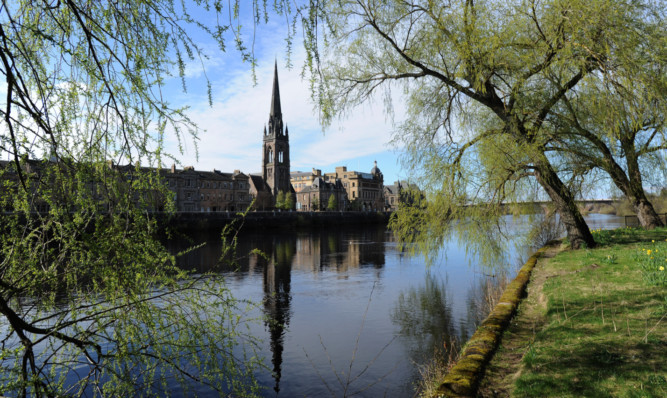The vision of the Tay at Perth as a bustling thoroughfare for pleasure craft and water taxis has moved nearer to becoming a reality.
Work will start next year on the riverfront pontoons which will be required to allow tourists and commuters to make journeys by water, the council has announced.
Earlier this year the UK Government earmarked £600,000 of funding for pontoon landing stages at three sites, Perth, Elcho Castle and Willowgate.
“The design process for the River Tay pontoon development is well under way and construction of these new pontoons is programmed to commence towards the middle of next year,” said a council spokesman.
“We are currently working with Tay Salmon Fisheries and the Tay and Earn Trust to survey sites along the River Tay in order to establish the exact locations for the pontoons.”
Exploiting the potential of the river for tourism travel has been championed by the council and the Perth City Development Board, but some people doubted it would ever get off the drawing board.
Councillor John Kellas, convener of the council’s enterprise and infrastructure committee, has always believed that with a bold approach to such a development, it would become a reality.
“I am madly keen to see this development (the pontoons) take shape,” he said.
“It would benefit everyone and become a major attraction for Perth and the wider hinterland.”
He said he understood that interest had already been expressed by people keen to operate services on the river.
The tourist potential of river craft could be extended, with vessels possibly connecting to Dundee’s waterfront once the V&A museum is open, and stopping at the five-star hotel planned for a waterfront site at Kinfauns.
The vision, as set out in the Inner Tay Masterplan, is also that local people should make use of the river with a park and sail proposal with cycle and footpaths linking Walnut Grove to the river among ideas put forward.
The core thread running through the masterplan is reconnecting Perth residents and visitors to the river and reconnecting Perth to Dundee and Fife.
While the pontoons are the first step in making more use of the river, the masterplan has a long-term vision which could see a floating heritage centre constructed and a network of riverside bothies used for visitor accommodation.
The estimated cost of maximising the use of the river as a tourist corridor and leisure resource could be £9 million.
